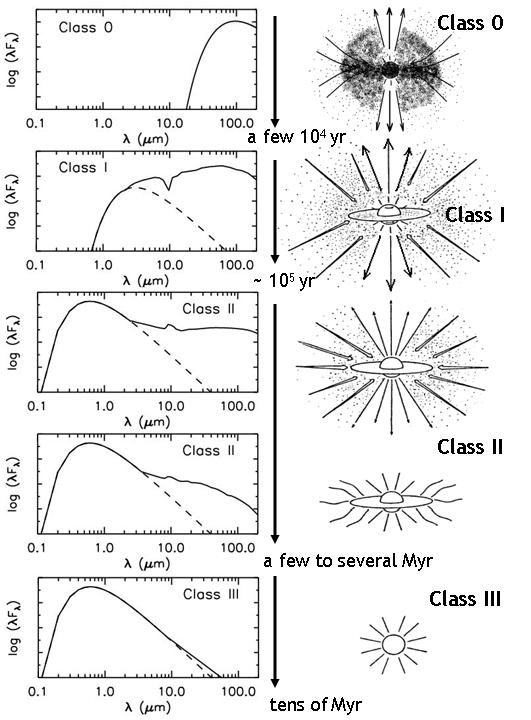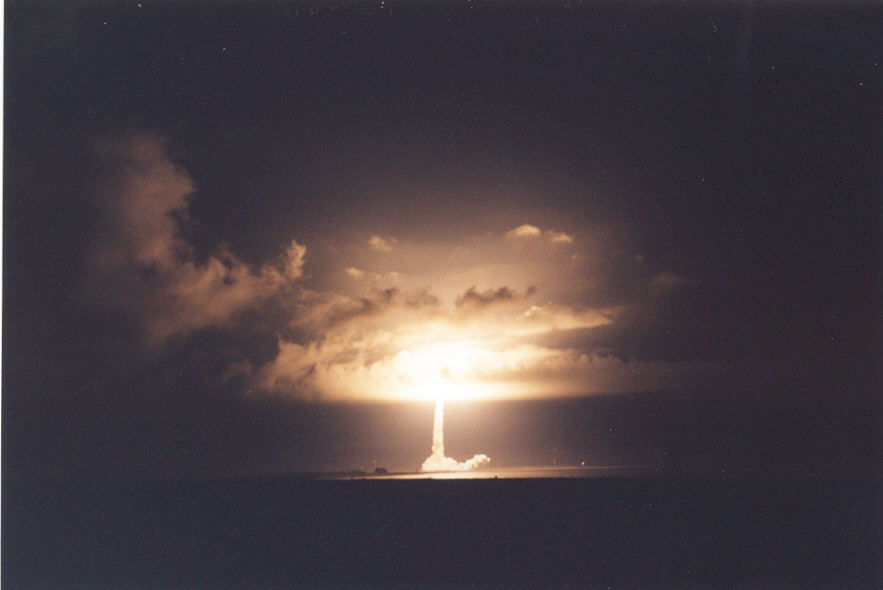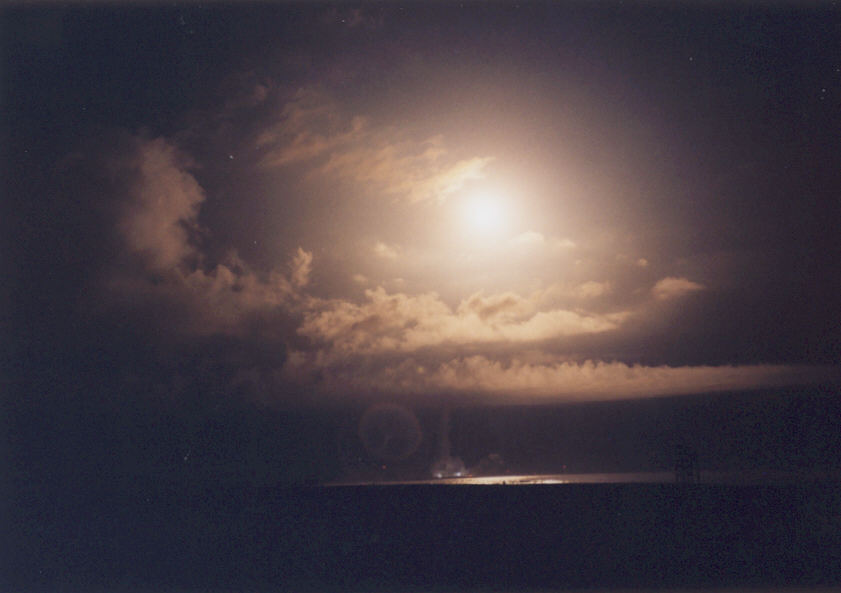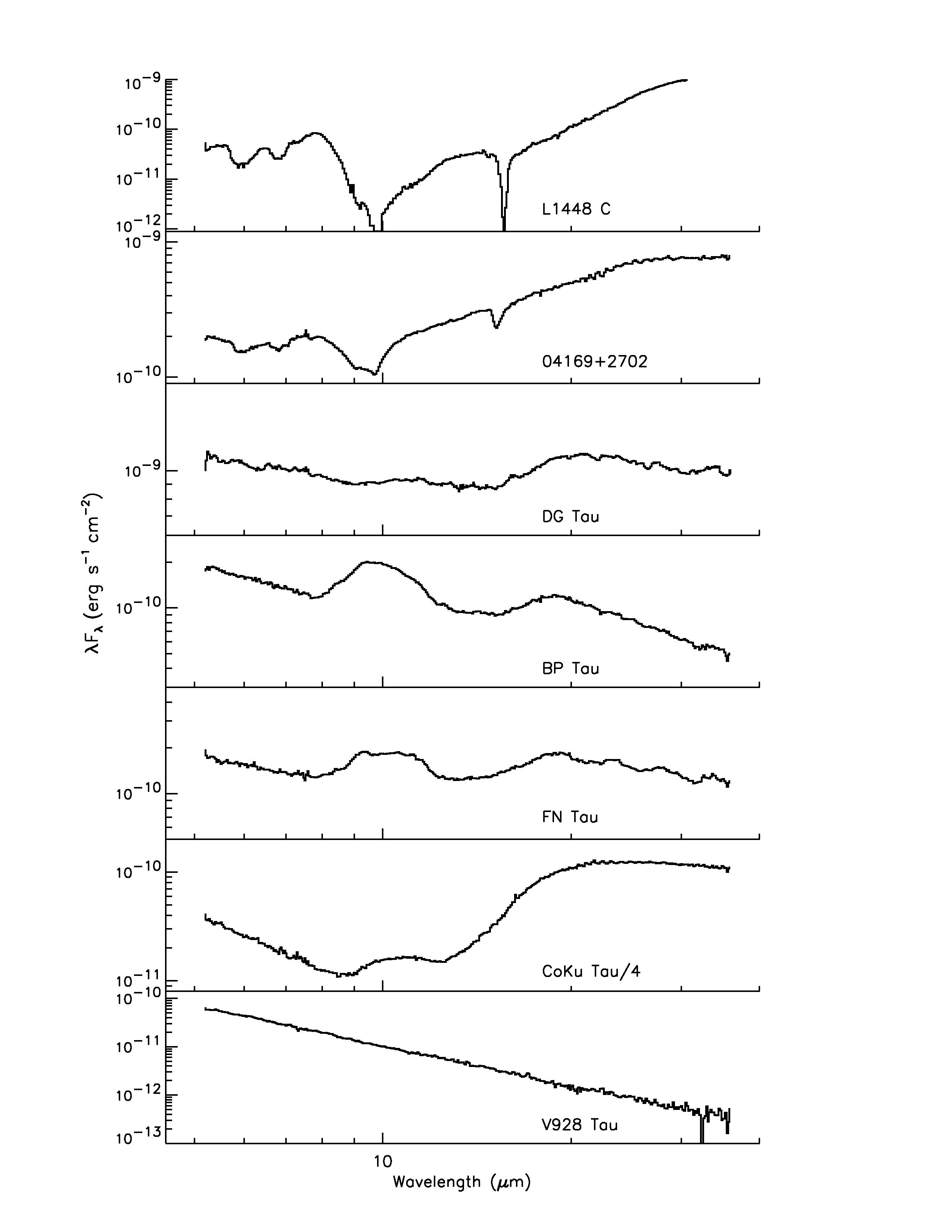

The diagram above (left) shows our current understanding of single, low-mass star-formation and was adapted from a similar diagram in Wilking (1989, PASP, 101, 229). Thus, Class 0 objects are the earliest, embedded stage in the star-formation process, while Class I objects are the more typical protostars surrounded by a disk and an envelope. Class II objects, also known as T Tauri stars, are surrounded by accretion disks, with material accreting onto the star at a rate that decreases with its age. Finally, Class III objects have dissipated their circumstellar material and contract towards the main sequence. Almost all Class II objects are also referred to as classical T Tauri stars, while Class III objects typically are weak-lined T Tauri stars; the "line" refers to emission lines in their spectra which are indicative of accretion. The plots on the right-hand-side show two model calculations, one for protostars, which are surrounded by an envelope and a disk (top), and one for T Tauri stars, which are surrounded by a circumstellar disk whose inner rim, the so-called "wall", emits prominently in the near-and mid-infrared (bottom). These models were calculated using modeling codes developed by Nuria Calvet (University of Michigan) and Paola D'Alessio (UNAM, Mexico), respectively. They help us to interpret observational data; if a model fits the data, we are reassured that we (at least partly) understand the objects we are studying.
The Circumstellar Environment Studied with the Spitzer Space Telescope
I have been studying these circumstellar envelopes and disks for a decade, using near- and mid-infrared data as well as models to understand their structure and evolution. At first I started with ground-based imaging at near- and mid-IR wavelengths to resolve close multiple systems; since young stars often form in multiples, high-resolution data are essential to understand their properties.With the launch of the Spitzer Space Telescope in August 2003 (see images below), a new window onto the study of low-mass star-formation was opened: since the dust in the envelopes and disks emits very strongly in the mid-infrared (which is roughly defined from 3 to 30 micron), the Spitzer Space Telescope is ideally suited to study circumstellar environments and thus the conditions of star and planet formation.


The plot below shows spectra of different classes of young stars obtained with the Infrared Spectrograph (IRS) on the Spitzer Space Telescope. The top spectrum, belonging to L1448 C, is an example of a Class 0 object, a deeply embedded protostar that causes absorption features by ices and silicate dust. The next object, 04169+2702, is a Class I object, which is still surrounded by an envelope, but less embedded. DG Tau, BP Tau, and FN Tau are Class II objects in the Taurus star-forming region. At 10 micron, the spectrum of BP Tau shows a broad, smooth emission feature due to mostly amorphous silicate dust grains, while the spectrum of FN Tau displays a more angular feature indicative of the presence of crystalline silicates. CoKu Tau/4 is a special T Tauri star: it has a hole in its disk and thus lacks excess infrared emission below 8 micron; in this case, it turned out that the hole is carved by a close binary star, but in other cases the hole could reveal the presence of a possibly planetary-mass companion. Finally, the spectrum of V928 Tau shows no excess emission; it decreases just as a regular stellar photosphere.
Last modified: February 1, 2013
